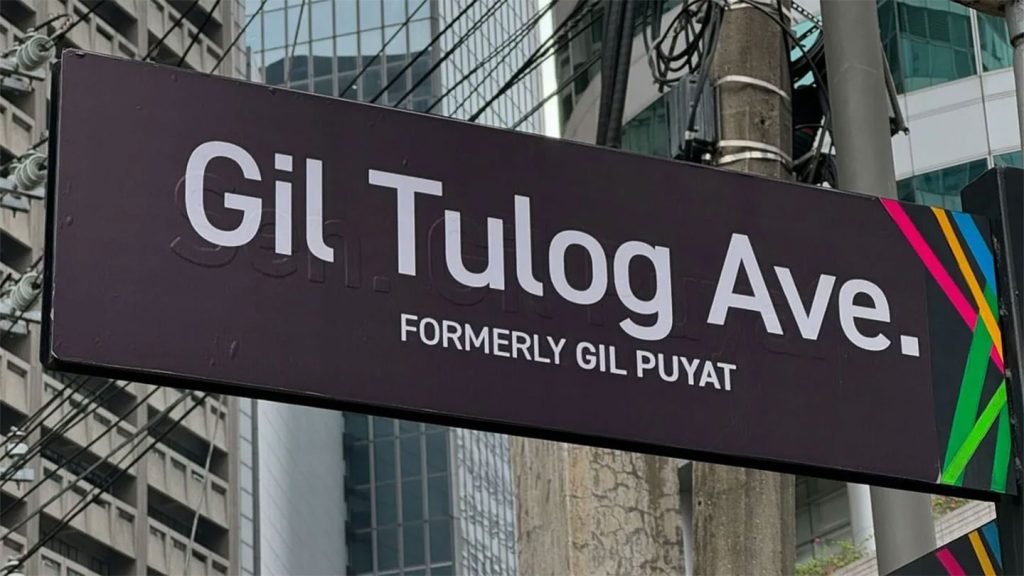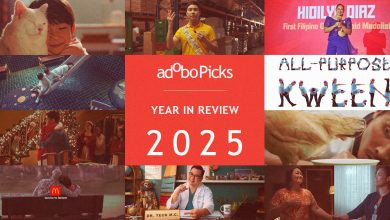UPDATE: The agency responsible for the “Gil Tulog” campaign issued a public apology via their Facebook account on July 30, 2024 at 9:08 a.m. The article below appears as it was originally published on July 29, 2024.
MANILA, PHILIPPINES — A recent marketing stunt for a local melatonin product made the headlines last week for all the wrong reasons. Gil Puyat, a main thoroughfare in Makati City’s bustling business district, had its name changed to “Gil Tulog” in several street signs around the city, a cheeky nod to the product’s brand promise. This prompted a call-out from the family of former senator Gil Puyat himself, who believed it was disrespectful to his legacy.
This isn’t simply a case of an ad offending a family, however. The greater issue here is that street signs serve a public utility, and to change one’s label for the sake of stunt marketing not only creates confusion for motorists, commuters, and pedestrians, but it also indicates an overreach of advertising itself. It was an unethical idea, full stop; that it made it to execution implies that the public good of any structure can be overridden for commerce.
The incident immediately sparked speculation on who was ultimately responsible for the “Gil Tulog” stunt, and who should therefore be held accountable. Some arguments call for command responsibility on the client themselves for pushing through with the ad. It’s true that clients have the final say in every decision — no ad goes out without their approval, after all.

But approving an ad is never a unilateral process; agencies conceptualize the ad, pitch it, convince the client that it’s a good idea, and then execute it. A controversial ad sees the light of day because of the client and the agency working in concert. An approved concept is the product of both sides coming to an agreement, making the agency just as accountable as the client.
At the same time, there’s also the issue of the Ad Standards Council (ASC), a self-policing body within the advertising industry that aims to ensure all ads are done legally, ethically, and within Filipino society’s moral boundaries. Something like “Gil Tulog” must have undergone an approval process with the ASC before going public, unless someone was either asleep at the wheel, convinced to look the other way, or — as in this particular case — there was a loophole that clears the ASC of any accountability. In a statement dated July 27, 2024, the regulatory body said that the ad was not cleared with them as street signs without a brand name do not fall within their jurisdiction.
But what about the LGU under whose jurisdiction the Gil Puyat street signs fall? Stunts like these can’t be done without the proper permits from the city. By all accounts, the ad was, in fact, approved, putting some of the accountability on Makati City as well.
The fact of the matter is that all parties in this case are responsible for the incident. “Gil Tulog” could not have happened without an agency to come up with the idea, convince the client to go with it, and execute it. It couldn’t have happened without a client approving said concept and execution. It wouldn’t have made it out to the public if regulatory bodies in both the ASC and LGU had blocked it.
The City of Makati, through Mayor Abi Binay, has already held themselves accountable for their part. In her public apology, the mayor stated that she’d have outright rejected the ad if brought to her for approval, and that the officials responsible for issuing the permits have been reprimanded. She had also ordered the ad to be taken down.
The ASC has clarified in their own statement that the case was out of their hands, but has also assured the public that they are in contact with organizations the agency is affiliated with in order to discuss their next course of action.
The client has also issued a public apology, admitting that the campaign was a “misstep”, and has committed to practicing better sensitivity in their future efforts.
As of this writing, the only party not to have issued a statement is the agency itself. This is troubling, as matters of accountability are only ever fully accepted by the public these days if all responsible parties make their statements. An incident like this invites scrutiny at every level, and the longer one party remains silent, the greater the public scrutiny for all.
This isn’t the kind of scrutiny the advertising industry wants to invite, either. There is a serious risk of overcorrection when it comes to matters of public concern; remember when hammers were banned from malls simply because a gang had used them for a robbery? Or when a convoluted, sexist ban on riding in tandem on motorcycles was enacted as a response to crimes committed in said fashion?
Outrage the public enough, and there could be similar overcorrections impacting the ad industry — and perhaps any public display of creativity — in the future. And that’s something no one wants.
This is a developing story, and will be updated as more facts come forward.








